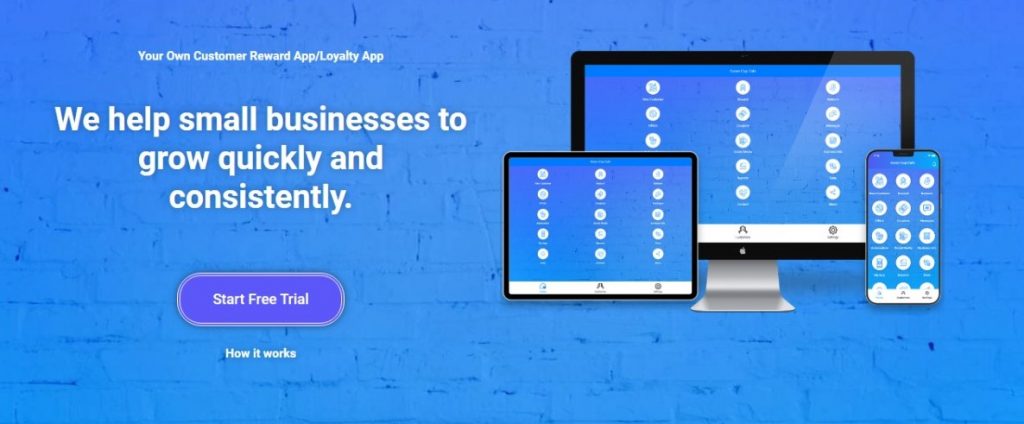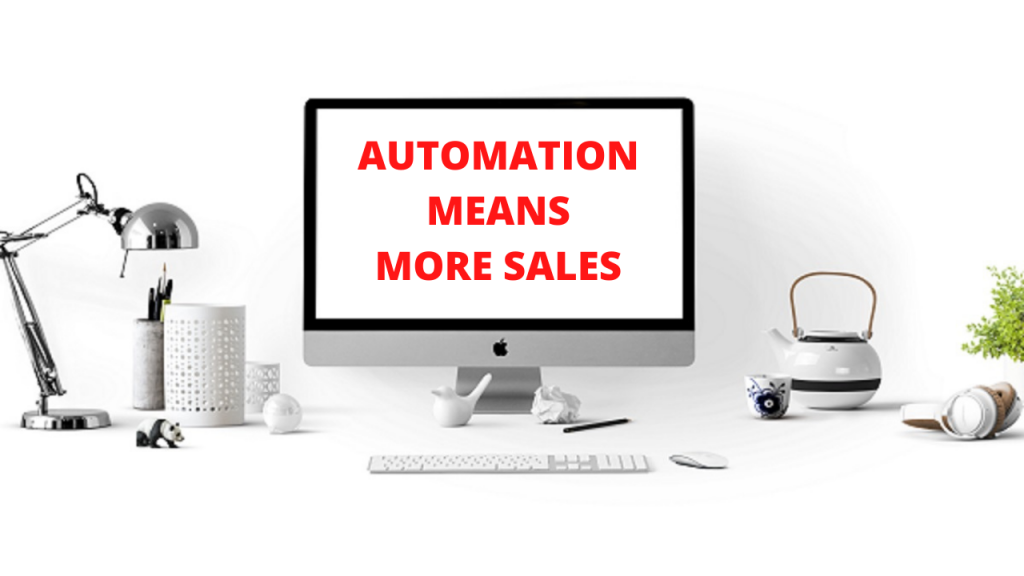How Marketing Automation Can Increase More Sale. Marketing automation can help you place prospects in account-based marketing (ABM) plan that are more likely to convert, allowing your sales and marketing teams to work more efficiently. Marketing automation increases sales productivity by 14.5 per cent on average and reduces marketing overhead by 12.2 per cent on average. How Marketing Automation Can Increase More Sale.
Automation is the answer for many CEOs, as sales and marketing productivity is a vital component that drives company success. Consider how much time your sales and marketing staff spend each day on tiny, repetitive tasks like data entry and spreadsheet generation.
According to a survey done by the CMO Council, organizations lose at least $1 trillion each year owing to mismanaged chores that could have been resolved with better marketing-automation technologies. This fact should make everyONE uncomfortable. How Marketing Automation Can Increase More Sale.
Companies benefit from the following benefits when they use the correct automation tools:
- Alignment between sales and marketing has improved.
- For outbound ABM plans and beyond, more qualified inbound leads are needed.
- A better conversion rate of leads to customers
- Upsell and cross-sell potential have increased.
- Pipelines are being built that are both powerful and growing.
Here’s how to put marketing automation to work for your business so you can reap the benefits of technological improvements while saving time and money.
Read these articles:
Popular Ways to Drive Customers on Website
How Mobile Apps Can Attract New Customers
13 Benefits of Shopify for Your Business
Make a data-driven customer strategy in 2022
Take this amazing relationship to the next level
8 Ways to increase and Maintain Customer Loyalty
What Is Marketing Automation?

Marketing automation is the process of leveraging technology to develop automated workflows for time-consuming, laborious, and necessary tasks that are carried out across many channels in order to generate more qualified leads that convert into consumers. The term “workflow” in marketing automation refers to a set of actions or processes that are followed to fulfil a sales or marketing task.
Repetitive processes such as email marketing, ad campaigns, social media posting, lead scoring, and report creation may all be simplified with marketing automation solutions, freeing up your personnel to focus on marketing and sales efforts that increase the bottom line.
When software, processes, and strategy are all combined, marketing automation tools function best. Your processes should enable you to guide prospects through the consumer journey with highly targeted content that converts them into paying customers. Let’s walk through how to construct a successful marketing automation strategy using crucial steps now that you know the capabilities.
Step 1 : Know the Profiles and Journeys of your Ideal Customers
Because it works well within the flywheel, marketing automation saves you time and money. This technology enables you to create completely integrated strategies that reach your target audience across many platforms, allowing you to collect more information about them and better qualify leads. The goal of the entire process is to attract, engage, and delight leads by providing nurturing touchpoints that remind them why they should choose your products or services. You must thoroughly understand your consumers and the process they take to become a paying customer in order to set up the most successful, flywheel-centric, automated touchpoint plan.
Creating a consumer-journey map is a practical approach to layout your prospects’ journey. These maps show your customer’s journey from the moment they first enter the flywheel as a lead to the moment they buy your product or service. This map will indicate what your leads are searching for as they progress through the automated touchpoints, allowing you to better understand their requirements and eventually save and generate more money. According to Hubspot data, more than 80% of firms that focus on customer experience see an increase in revenue.
You’ll need to know a few things about your customer to develop your consumer journey map:
- Know your Ideal Prospect’s Profile – Who is your target market for your product or service? What type of customer do you want to acquire your product or service from? What are their racial and ethnic demographics, as well as their psychographics?
- Understand your Prospect’s Goals – Consider what the ultimate goals are in each stage of the customer journey: awareness, consideration, and conversion.
- Determine the Buyer’s Touchpoints – These are the strategies that your marketing automation software employs. When a lead comes into contact with your brand, this is referred to as a touchpoint. These can take the shape of an email, an advertisement, a white paper download, a form fill, and so on. The simplest method to spot them is to consider all of your brand’s consumer touchpoints and pinpoint the ones that often lead to sales. Pro tip: For this phase, Google Analytics is an excellent tool to use.
- Identify Customer Pain Points – For your customers, where does flywheel friction occur? Are they going missing from your ABM strategy, unsubscribing from individual emails within a series, or leaving your website too soon?
- Analyze the situation and, if required, adjust– Make sure your client journey map isn’t collecting dust. Your consumer journey map will change as your customer does. Keep an eye on the touchpoints to see if they’re converting as they should or if the journey has changed.
Understanding your customers’ journey is critical to improving the quality of your leads and overall sales with your marketing automation approach.
Step 2 : Set SMART Objectives

In order to properly set up your marketing automation tool(s), you must keep track of your goals and data. If your overall objective is to convert 50 qualifying leads into customers per month, keep track of how many conversions you’re getting now, as well as the marketing and sales tactics that are converting those leads.
Is it true that you need to download 100 whitepapers before 50 of your leads convert? Do you send three emails to entice people to visit your website? You can better grasp the duration, amount of touchpoints, and cost to reach your big goals if you know the metrics and touchpoints that lead to your existing conversions. Additionally, using a lead-scoring platform, analytics can assist you to identify which prospects are more likely to close and when they are more likely to close.
The ability to apply lead scoring is another added benefit of marketing automation. Lead scoring is a process that allocates quantitative value (points) to prospects based on the actions they take along their consumer journey.
Because marketing automation is primarily reliant on analytics, measuring your campaigns is an important part of your processes. Measuring the results is part of the territory, whether your touchpoints are email, advertisements, content downloads, phone calls, or anything in between. Don’t allow the abundance of data, though, to overwhelm your staff. When launching your workflows, keep the following critical performance metrics in mind:
- Website traffic – After you start a workflow, keep an eye on your traffic surges. If you’re using automation to send out an email series, keep an eye on which emails are generating the most traffic after they’ve been sent. This is an important engagement statistic that can help you figure out which touchpoints encourage your audience to interact with your business more. Make sure your Google Analytics traffic is properly tagged. On your Google Analytics account, marketing campaigns should be specifically tagged to each marketing campaign so that your team can see which efforts are paying off and which ones require more attention from your marketing team. Tagging your marketing campaigns in Google Analytics is a method of informing Google about where your online traffic originates.
- Marketing-Qualified Leads (MQLs) – Inbound leads that have been approved by the marketing team to be sent on to the sales team based on the possibility of the account closing are known as marketing-qualified leads. This is where lead scoring comes in handy; examples of lead-scoring criteria include how many emails a prospect opened, whether they downloaded any stuff from your site, and which sites they visited. MLQs are a type of performance indicator. You want as many MQLs as possible because not every lead will close. In your automation plan, you want to see a steady increase in these leads. Pay attention to which touchpoints generate the most MQLs and allocate more points in your lead-scoring system to those actions.
- Customer Acquisition Cost (CAC)– This is a ROI metric that measures the cost of persuading a prospect to buy what you’re offering. This measure is an excellent indicator of how well your marketing automation software is being used. Your team may focus on lowering this measure (and hence improving profitability) by nurturing your leads more quickly and efficiently if you track it. CAC is computed by dividing all marketing costs (expenses) by the number of consumers gained during the period in which the marketing dollars were spent.
You’ll note that there are three types of metrics that give you information about different areas of your marketing automation strategy: engagement, performance, and ROI. Engagement metrics give you information about how your prospects react to the stuff you’re delivering them. In each phase of the flywheel, performance metrics inform you how valuable your content is to prospects. ROI metrics are quantifiable indicators that show how much money you’ve spent on your marketing automation platform and how hard your team has worked.
Understanding which KPIs are critical to your objectives will enable your team to properly employ marketing automation, allowing your firm to benefit from the technological advancements that automation provides.
Step 3 : Find Gaps in Your Processes

If your workflows, lead-scoring programme, and/or other marketing-automation efforts aren’t operating as well as you’d want, one of the following factors could be to blame:
- Your Audience has been Segmented Incorrectly – Are you sending the correct message to the appropriate people? You’ll get better results if your messaging is tailored to your prospects in each section of the flywheel. If specific prospects are becoming less engaged and dropping off before converting, there’s a message connection to be made, and it’s time to investigate and pivot.
- Mismatches of Sales and Marketing– Are your marketing and sales teams on the same page? Automated tactics, such as lead scoring, guarantee that your sales and marketing teams agree on which prospect activities are more important in terms of conversion likelihood within your flywheel, i.e., which leads the sales team should focus on converting. If the MLQs aren’t helping the sales team accomplish their targets, it may be time to revisit the details of your automated lead-scoring software.
- Quality of your Content – Is your message resonating with your target market? Are you split testing a range of content variables including the offer, the call-to-action, the language, and the design of this material if you aren’t already?
If none of these issues is resolved, go back and review your consumer profiles and consumer journey maps. Are those assets up to current and comprehensive adequate to truly comprehend your customers? Do your touchpoints correspond to your target audience, i.e., are you distributing material to the places where your ideal audience hangs out online?
Step 4 : Upselling and Cross-selling two Aspects of Marketing Automation

Stopping your automation efforts once a lead becomes a customer is leaving money on the table; the best marketers don’t halt marketing-automation processes once they’ve secured a customer. When a lead becomes a customer, the next step is to turn them into loyal customer who buys more of your company’s products/services and refer perfect clients to you. To keep your flywheel spinning at top speed, maintain serving relevant material to your clients using your marketing automation platform. Selling to an established client is 60-70 per cent likely, but selling to a new prospect is only 5-20 per cent likely.
Furthermore, selling to current clients is significantly more efficient than recruiting new consumers. It might cost up to 25 times more to recruit a new customer than it does to keep and build an existing relationship, depending on your sector.
Look for the Right Marketing Automation Tool
Today, there are so many tools to pick from that many businesses are unable to make decisions. When selecting a marketing automation platform, consider the following questions:
- What essential capabilities does my team require to carry out existing initiatives and achieve future objectives?
- What are the pain spots for my prospects? When do your prospects stop responding to your sales efforts?
- How can marketing automation best support your inbound and ABM strategies? Consider which actions in your ABM plan could be automated. For example, are you sending out emails after your prospect receives your big gesture?
- Do you already have a CRM with automation features? Many well-known CRMs, such as Hubspot and Salesforce, do.
- What level of technical assistance will you require from your marketing automation platform? What level of platform knowledge does your sales or marketing staff have?
When it comes to selecting the right platform for your team, having answers to these questions is a smart place to start.
Step 5 : Retain Customers with a Digital Loyalty App

Don’t wait for the perfect reason to start your own business, now it’s time to start building up your revenue stream. We help small businesses to grow quickly and consistently.
Many business owners and development strategists are aware of the old age that getting a new customer costs five times as much as keeping an existing one.
Because it is significantly more difficult and expensive to attract a new client than it is to maintain an existing one, customer retention is critical for the long-term success of your Gym.
Customer retention is especially crucial right now because the coronavirus outbreak has forced many people to cut back on their spending and reevaluate where and how they spend their cash.
- Digital Reward Card
- Issue Stamps or Points
- Chat & Messages
- Offers
- Coupons
- Business Promotions
- Social Media
- Automation
- Customer Analytics
Customer Analytics lets you monitor the performance of your reward program. You can measure loyalty metrics like “Repeat Purchase Rate”, “Redemption Rate”, “Revenue per customer”, and “Average Order Value”.
The software is really simple to set up and use so that you can start driving recurring business and increasing sales right away. We offer a 14-day free trial and can be used across numerous stores in multiple locations.
From our own Customer Loyalty App to highly customized loyalty and rewards programmes for corporations and brands, The Reward Stamp App offers loyalty solutions to organizations big and small.
If you’d like to talk about a loyalty or rewards programme for your company or brand, please contact us.
Please let us know if you have any questions or visit again and explore more possibilities. We are always with you.
Ready, Set & Automate

Now that you understand how marketing automation may boost your company’s efficiency and revenue, get started by determining your automation goals. And if you need help defining those goals, selecting the best platform, or setting it up, our team at Reward Stamp App is here to help.

